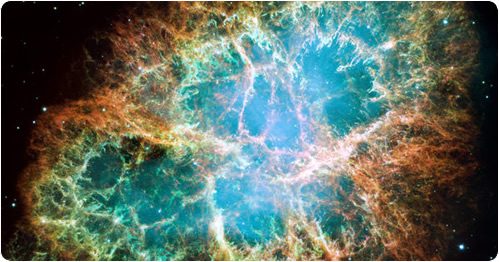Neutrino detection based on high Z materials will give the largest possible cross sections and best possible neutrino detection efficiency. Lead has an attractively large neutrino-scattering cross section per nucleon compared with other elements. As a result most of the scattering events produce neutrons, the signature signal of a galactic supernova.
At energies typical of supernova neutrinos, by the conservation of energy the CC process is only available for the electron neutrino and the electron antineutrino. Lead has a large neutron excess, which strongly inhibits the proton to neutron transitions due to Pauli blocking. In contrast, the reaction involving the electron neutrino in heavy elements has a large enhancement from the nuclear Coulomb effect in comparison to lighter elements. The suppression of electron antineutrinos and the enhancement of electron neutrinos make HALO uniquely sensitive to electron neutrinos and complementary to the water Cherenkov and scintillator detectors, which are primarily sensitive to electron anti-neutrinos. This large neutron excess allows many opportunities for neutron to proton transitions of the type
νe + n → e- + p
to proceed without Pauli hindrance. This predominant reaction in HALO produces Bi nuclei in excited states which decay by neutron emission:
νe + Pb → e- + Bi* Bi* → Bi + g + n
The HALO experiment is also sensitive to other neutrino flavours through the neutral current interaction as given by
νx + Pb → νx’ + Pb* Pb* → Pb + g + n
where the v may be replaced by v' and x may be e, m or t . Both the CC and NC reactions will produce an excited nucleus which will de-excite by emitting one or more neutrons and g rays to reach the ground state. As a result of this similarity between the signals for the CC and NC interactions, the HALO experiment cannot distinguish which interaction has occurred.
The neutrons, released from the interactions between the lead and neutrinos, thermalize by elastic collisions with other lead nuclei, and with a layer of polyethylene moderator. These thermalized neutrons are detected by 3He proportional counters through capture by a helium-3 nucleus:
3He + n → 3H + p, (Q = 764 keV)
Using lead for a neutrino detector has several advantages. First, it has a high neutrino capture cross section, i.e. neutrinos are more likely to interact with its nucleus than many other materials. Second, it has a low neutron capture cross section because it has what is known as a "doubly magic nucleus". Studies have shown that the nucleus is arranged similarly to electron orbitals, with protons and neutrons being arranged in shells. Lead has a full outer shell in its nucleus and, similar to the noble gases' almost non-existant reactivity, its nucleus rarely reacts to other nucleii or nucleons. This means that the neutrons have a higher chance of surviving the trip through the lead and the moderator into the neutron detectors.













